
Living with the Gods
BBC
Neil MacGregor explores the role and expression of shared beliefs in communities around the world. Produced in partnership with the British Museum.
- 14 minutes 6 secondsLiving with Each Other
Neil MacGregor concludes his series about shared beliefs. He began with the Lion Man, an object created 40,000 years ago, and now reflects on the present, on the future and on hope
Producer Paul Kobrak
The series is produced in partnership with the British Museum, with the assistance of Dr Christopher Harding, University of Edinburgh. Photograph (c) The Trustees of the British Museum.
1 December 2017, 10:00 am - 14 minutes 10 secondsThe Search for a State
Neil MacGregor continues his series on shared beliefs with a look at the attempts of some faiths to establish a state of their own.
An over-printed coin from 2nd century Jerusalem tells of the failed attempt of Shimon bar Kokhba to lay claim to a state for the Jews, free from Roman rule - while a white cotton flag, framed in pale blue, flew over Sudan after it had been taken by Mahdist forces and before the Islamic state collapsed in the mid 1890s.
Producer Paul Kobrak
Produced in partnership with the British Museum Photograph (c) The Trustees of the British Museum.
30 November 2017, 10:00 am - 14 minutes 33 secondsTurning the Screw
Neil MacGregor continues his series on shared beliefs with a focus on those faiths seen as a threat to the state.
A plain board, to be found on a 17th-century Japanese roadside, offers generous rewards to anyone who informs on Christians. At almost exactly the same time a print from France depicts the officially sanctioned destruction of a Huguenot Church just a few miles east of Paris.
Producer Paul Kobrak
Produced in partnership with the British Museum Photograph (c) The Trustees of the British Museum.
29 November 2017, 10:00 am - 14 minutes 24 secondsLiving with No Gods
Neil MacGregor focuses on societies which aimed to live without religious beliefs.
Neil examines a revolutionary clock, from around 1795, created in the wake of the French Revolution, and designed to mark a new way of living: in an age of reason, there would no longer be royalism or religion in France.
A poster from the Soviet Union celebrates the apparent triumph of scientific progress: the cosmonaut Yuri Gagarin floats in space, looks out and proclaims 'There is no God!'. It seems that the heavens are empty of divine beings, but full, instead, of starry promise.
Producer Paul Kobrak
Produced in partnership with the British Museum Photograph (c) The Trustees of the British Museum.
28 November 2017, 10:00 am - 14 minutes 16 secondsRuling with the Gods
Neil MacGregor continues his series on shared beliefs with a focus on earthly rulers and the gods.
Queens and kings may be priests of the gods, or their representatives. They may be incarnations - or even gods themselves. Or the relationship may be so close that to divide spiritual from temporal power at all would simply make no sense.
Neil examines these ideas, with the help of objects including a bronze staff belonging to the Oba of Benin, and a bronze vessel from China, whose inscription suggests that its dynastic leaders enjoyed a mandate from heaven.
Producer Paul Kobrak
The series is produced in partnership with the British Museum, with the assistance of Dr Christopher Harding, University of Edinburgh. Photograph (c) The Trustees of the British Museum.
27 November 2017, 10:00 am - 14 minutes 33 secondsGods Living Together
Neil MacGregor continues his series about the expression of shared beliefs with a focus on how faiths co-exist in India.
Producer Paul Kobrak
Produced in partnership with the British Museum Photograph (c) The Trustees of the British Museum.
24 November 2017, 10:00 am - 14 minutes 22 secondsGlobal Gods, Local Needs
Neil MacGregor continues his series about the expression of shared beliefs with a focus on gods can reach new communities, and how those communities can then adapt and change the faiths.
Producer Paul Kobrak
Produced in partnership with the British Museum Photograph (c) The Trustees of the British Museum.
23 November 2017, 10:00 am - 14 minutes 16 secondsThe Other Side of the Leaf
Neil MacGregor continues his series about the expression of shared beliefs with a focus on societies who believe that they share the landscape with co-inhabitants who are not visible but are present. Such belief systems can be found in places such as the Pacific island nation of Vanuatu.
It is difficult, Neil MacGregor suggests, to express this relationship with the landscape in the English language. Words such as spirits, gods or beings do not adequately convey the nature of the co-inhabitants - and although these co-inhabitants cannot always be seen, they are always there, on the other side of the leaf.
Producer Paul Kobrak
Produced in partnership with the British Museum Photograph (c) The Trustees of the British Museum.
22 November 2017, 10:00 am - 14 minutes 22 secondsLiving with One God
Neil MacGregor's series on the role and expression of beliefs continues with a focus on societies and faiths with a single god.
Using objects from both ancient Babylon and ancient Egypt, Neil examines how one god could become central to worship in these societies.
Producer Paul Kobrak
Produced in partnership with the British Museum Photograph (c) The Trustees of the British Museum.
21 November 2017, 10:00 am - 14 minutes 11 secondsLiving with Many Gods
Neil MacGregor's series on the role and expression of beliefs continues with a focus on societies living with many gods.
In the mid-1840s, a Roman earthenware jar was dug from the earth near Felmingham Hall in Norfolk. Inside, excavators found several belief systems, all mixed up together - for buried in the pot was a jumble of gods, deities of different kinds and origins, that tell us what it meant for people in Roman Britain around the year 250 to be living with many gods.
The great ancient Mesopotamian Epic of Gilgamesh includes a narrative with striking similarities to - but important differences from - the story of Noah in the Bible. Here a council of gods is persuaded to unleash a great flood to wipe out humankind.
Producer Paul Kobrak
The series is produced in partnership with the British Museum, with the assistance of Dr Christopher Harding, University of Edinburgh. Photograph (c) The Trustees of the British Museum.
20 November 2017, 10:00 am - 14 minutes 11 secondsRejecting the Image
Neil MacGregor's series on the role and expression of beliefs continues with a reflection on faiths which focus on the word rather than the image.
A striking cobalt blue mosque lamp, from around 1570, shows an Islamic way of doing honour to the word: calligraphy. In Jewish religious ceremonies a yad - a small silver rod with a little hand and a pointing index finger - is used to follow the text during readings from the Torah, to avoid any damage to the delicate parchment.
Producer Paul Kobrak
Produced in partnership with the British Museum Photograph (c) The Trustees of the British Museum.
16 November 2017, 4:00 pm - More Episodes? Get the App
Your feedback is valuable to us. Should you encounter any bugs, glitches, lack of functionality or other problems, please email us on [email protected] or join Moon.FM Telegram Group where you can talk directly to the dev team who are happy to answer any queries.
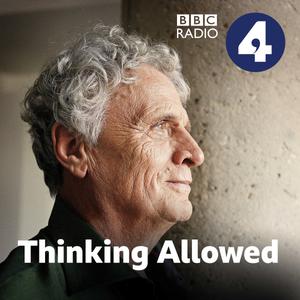 Thinking Allowed
Thinking Allowed
 Great Lives
Great Lives
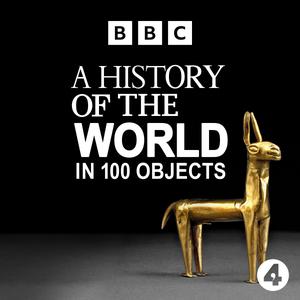 A History of the World in 100 Objects
A History of the World in 100 Objects
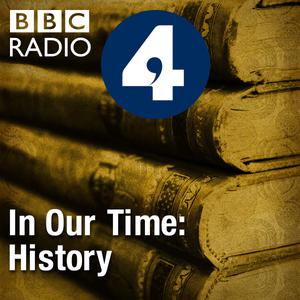 In Our Time: History
In Our Time: History
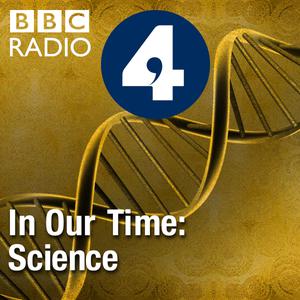 In Our Time: Science
In Our Time: Science
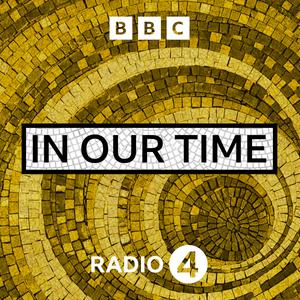 In Our Time
In Our Time